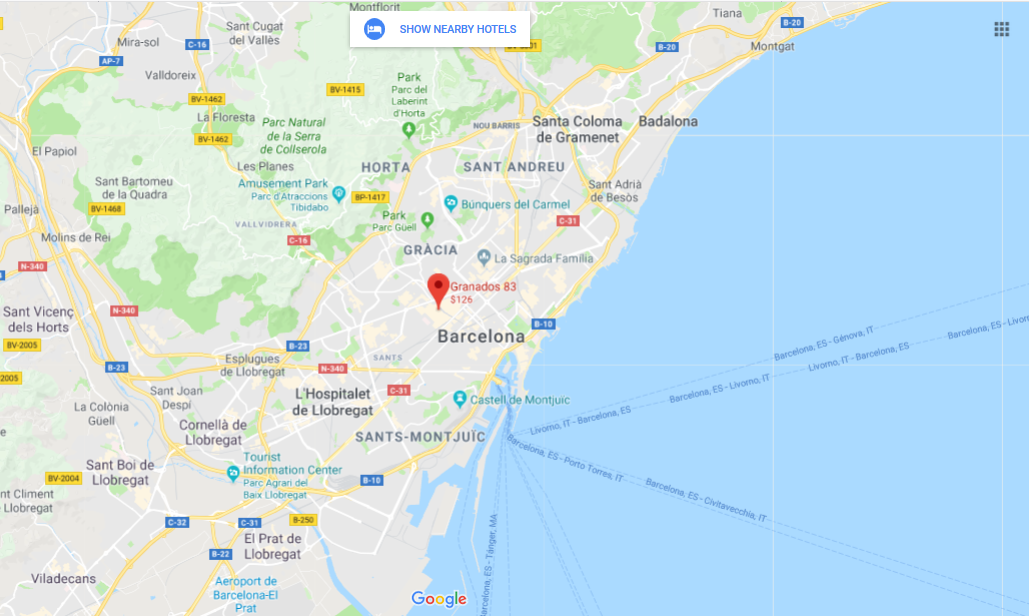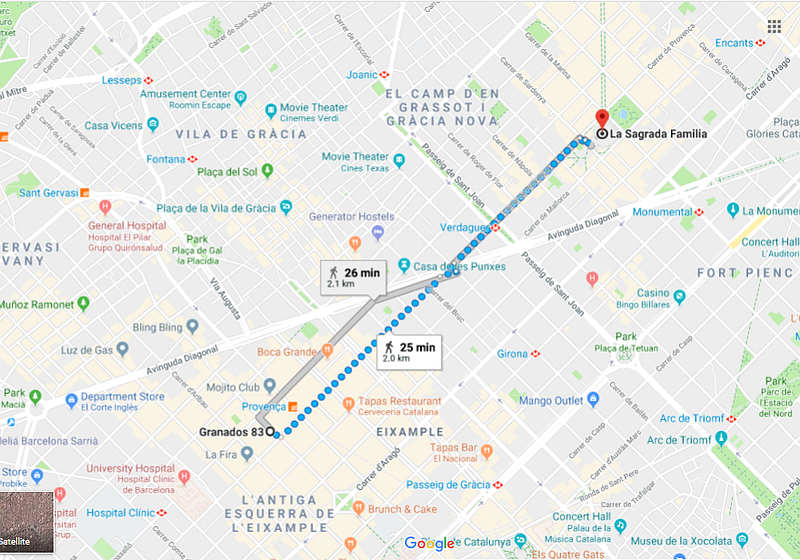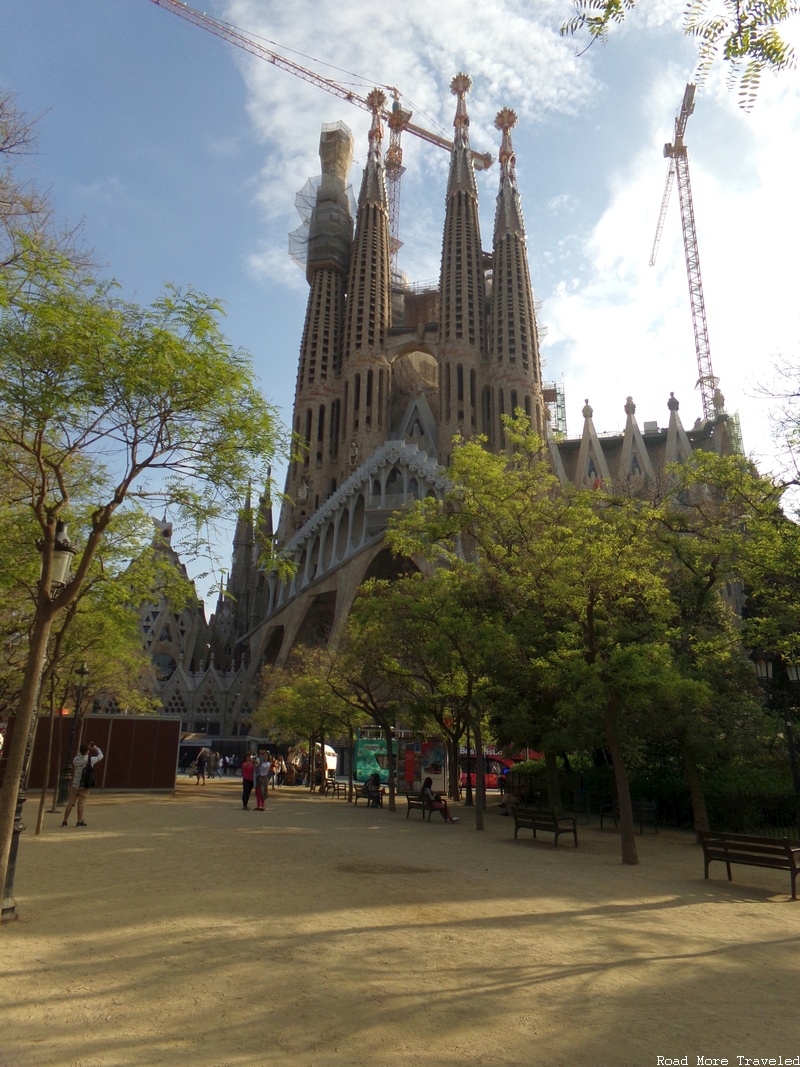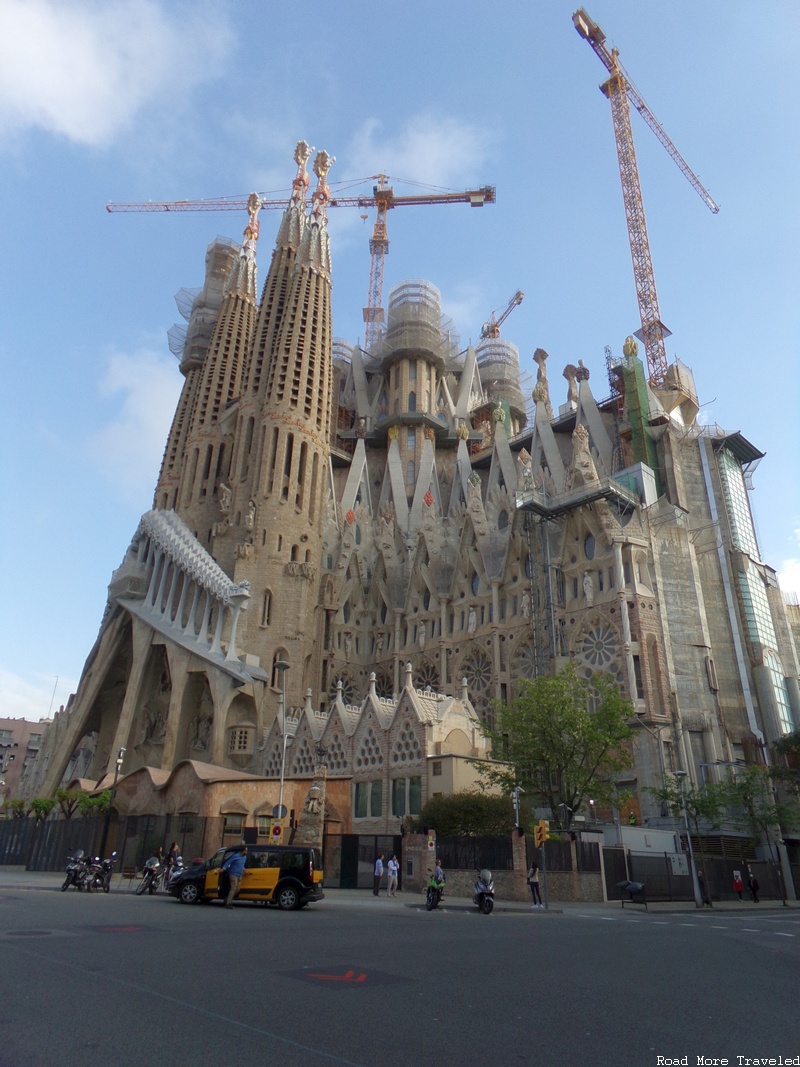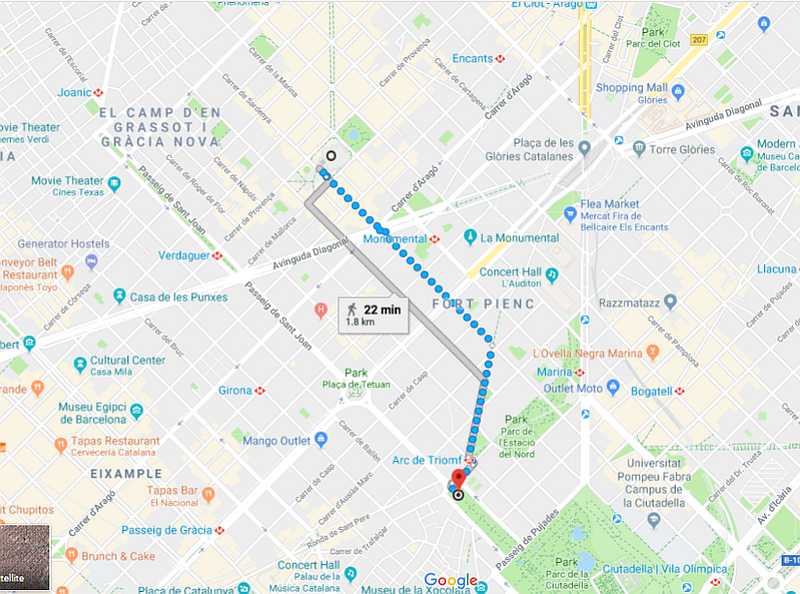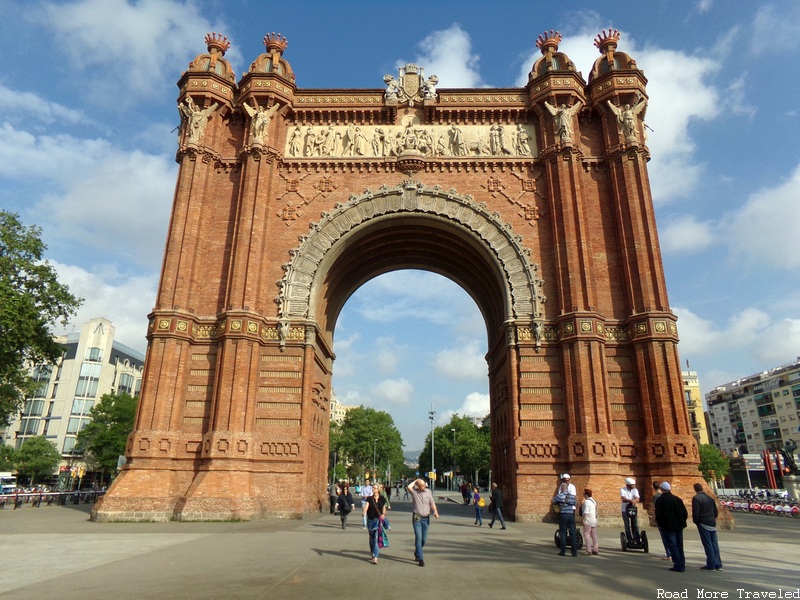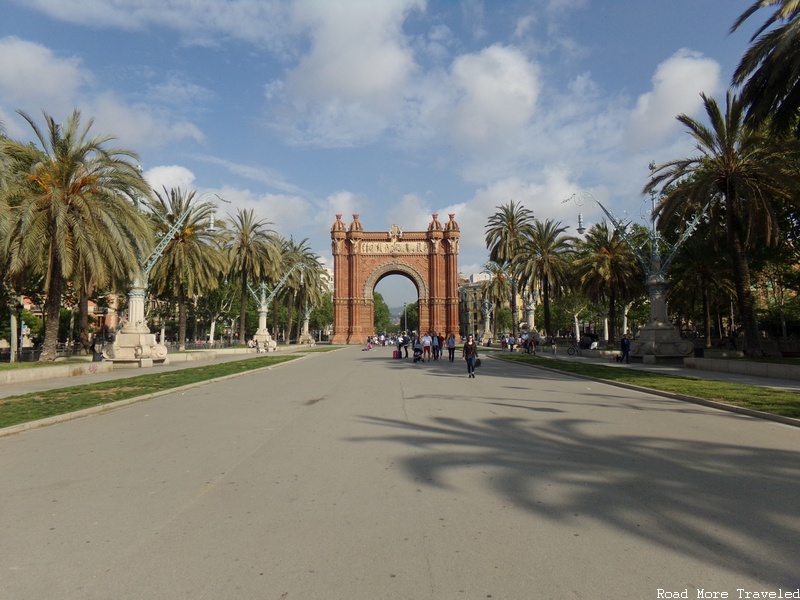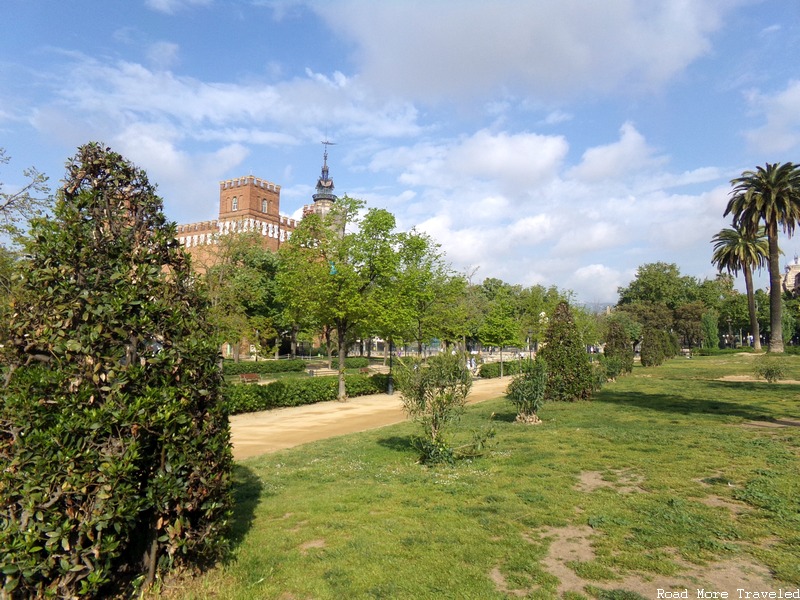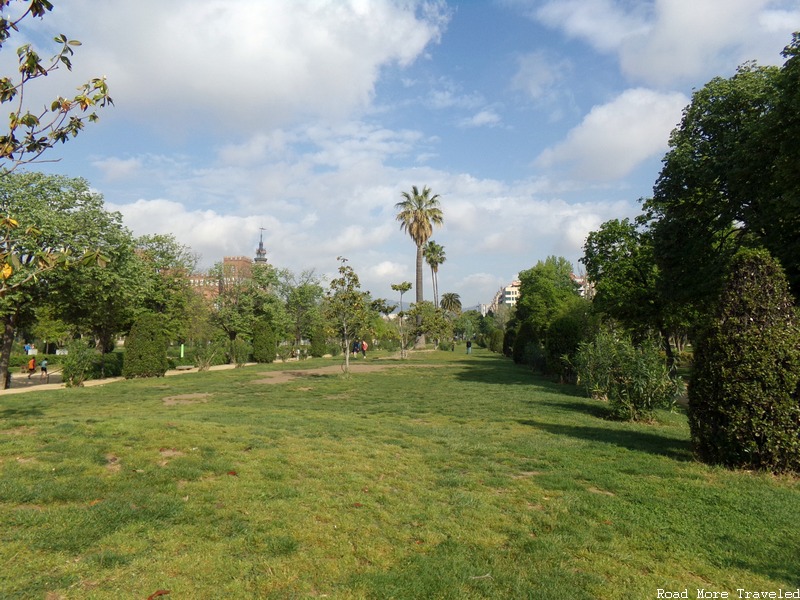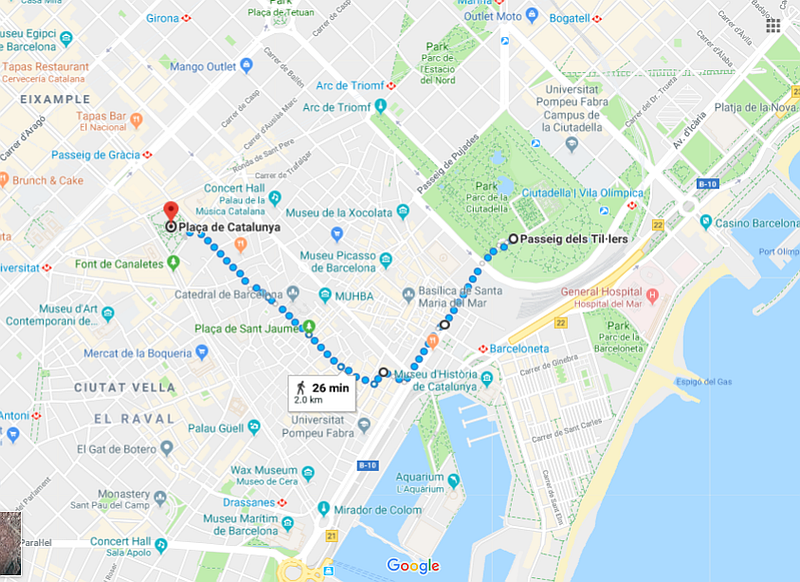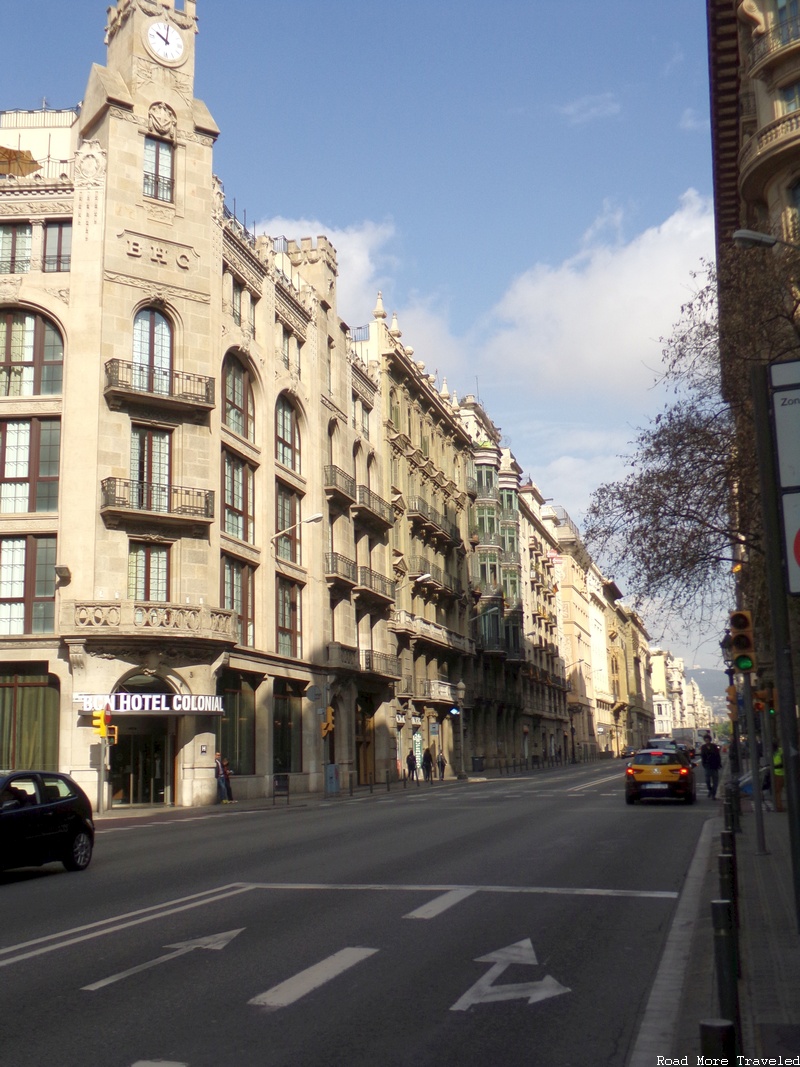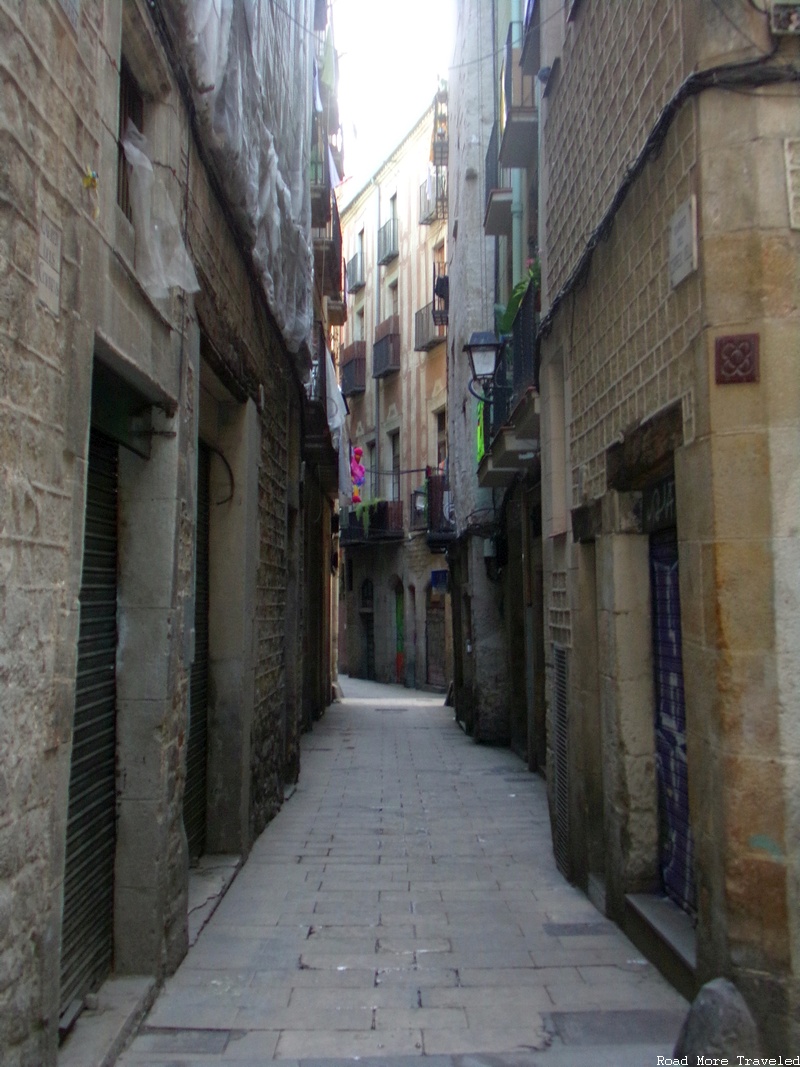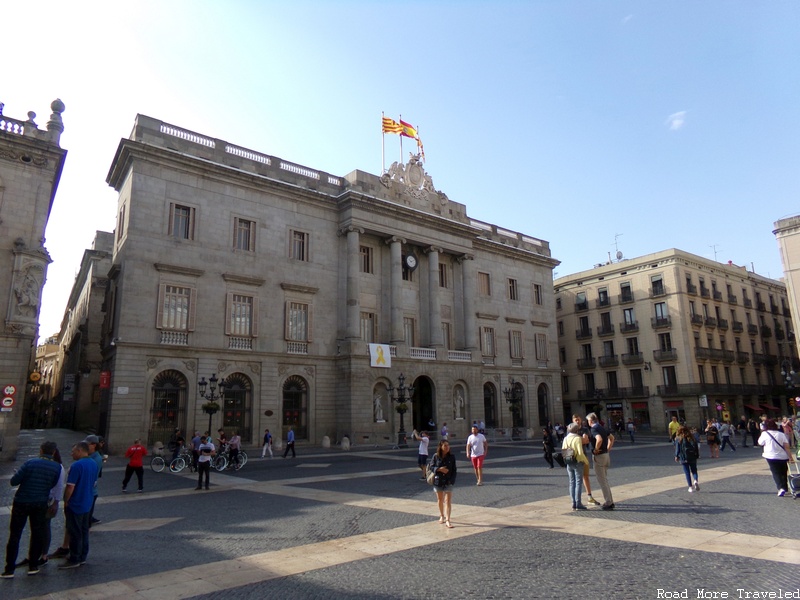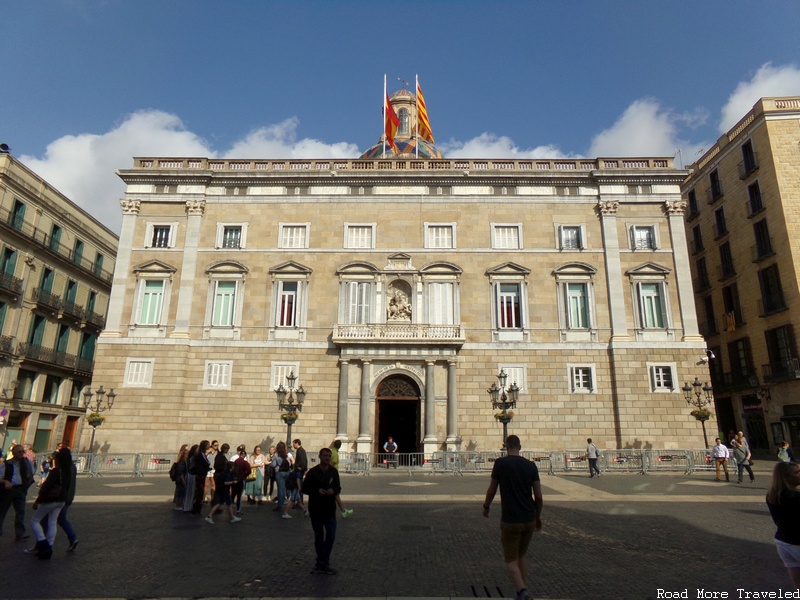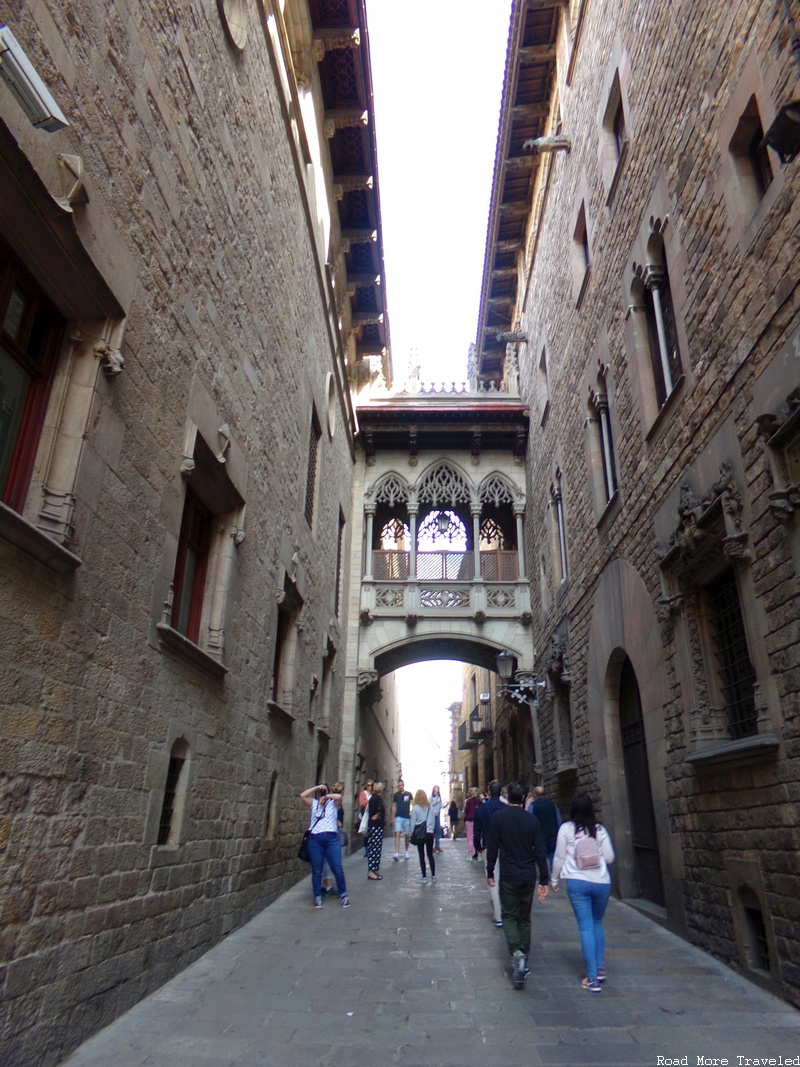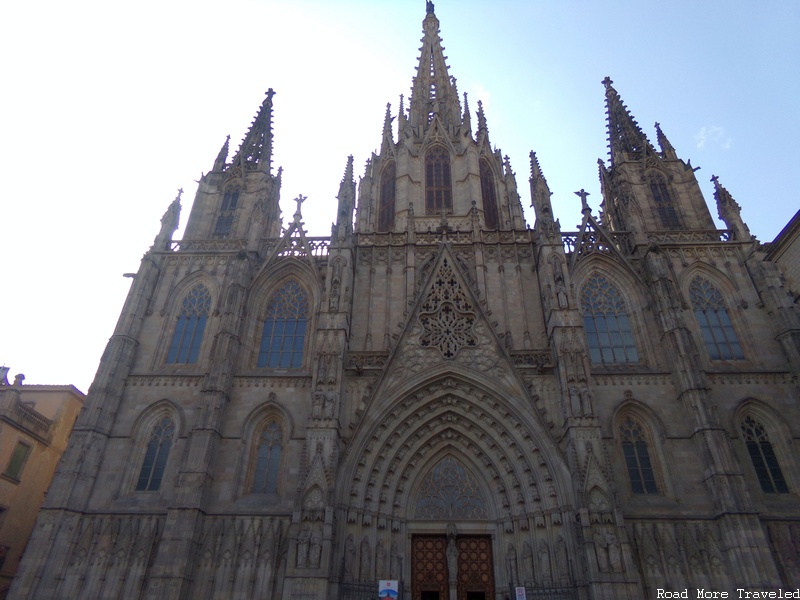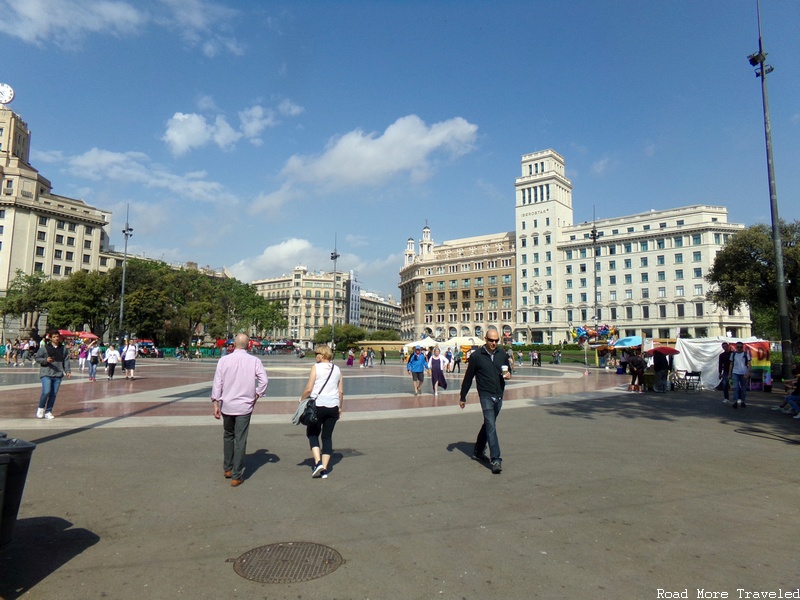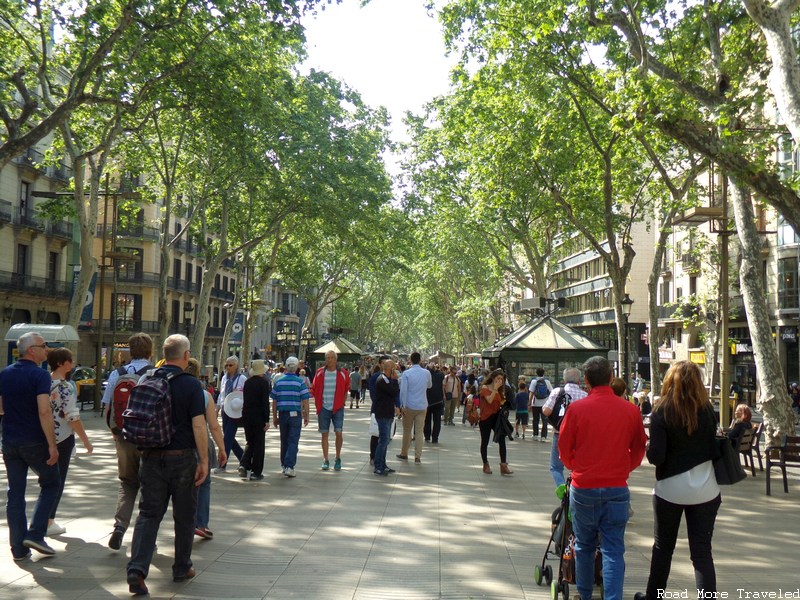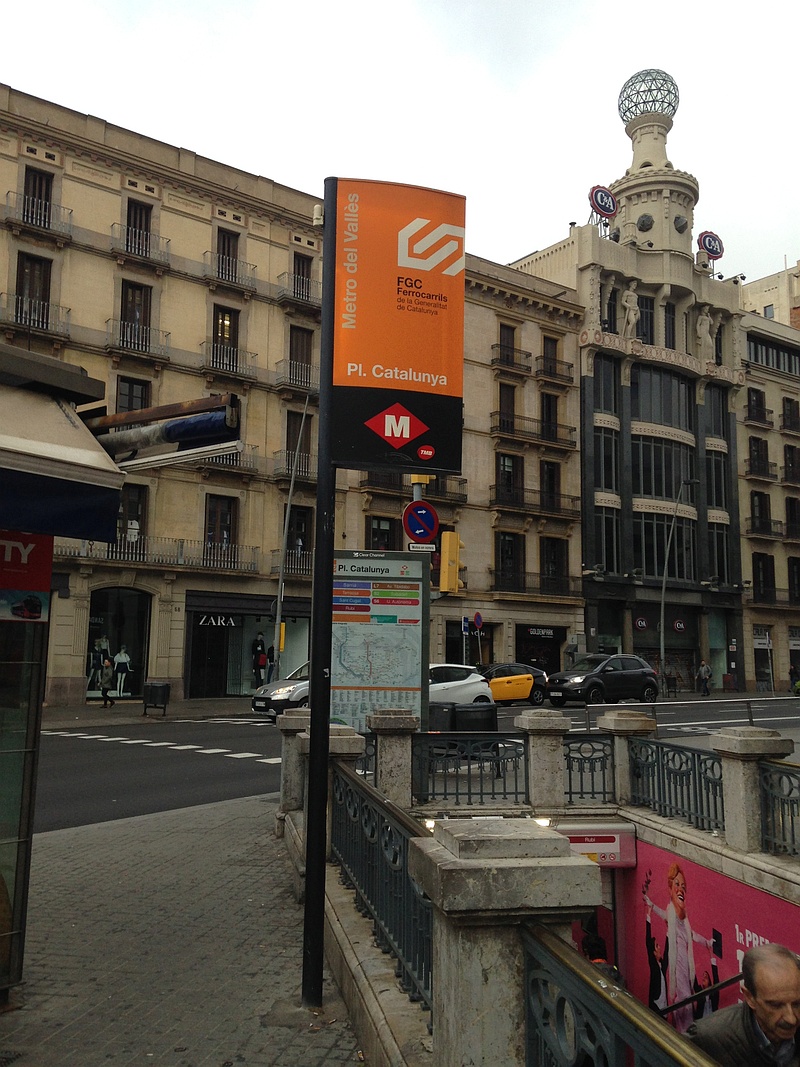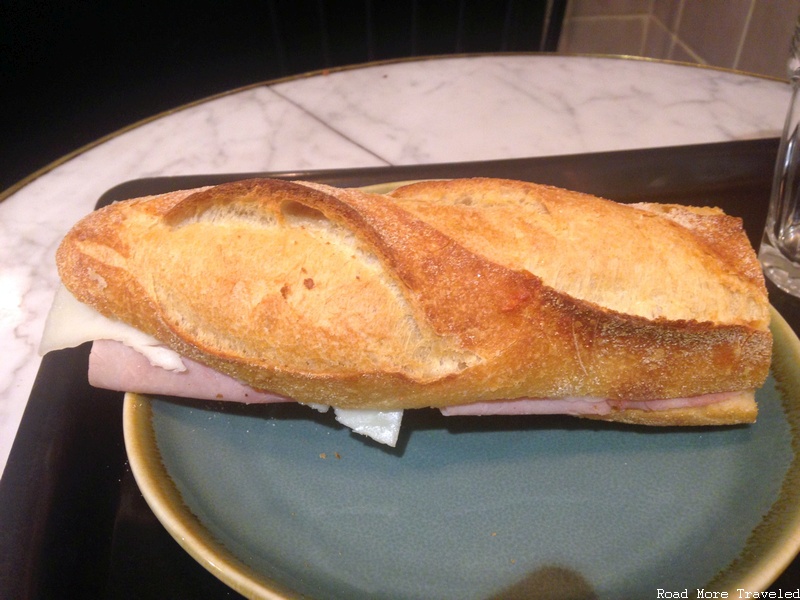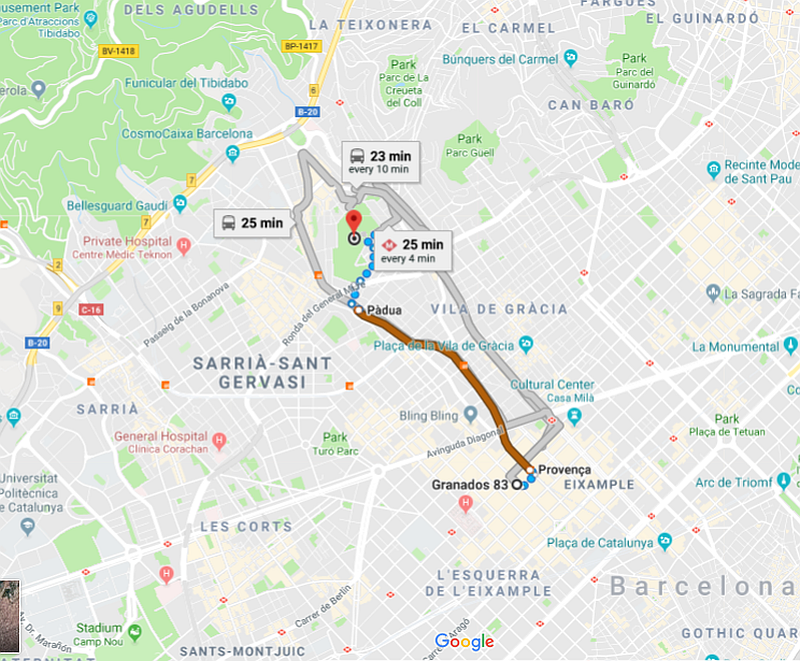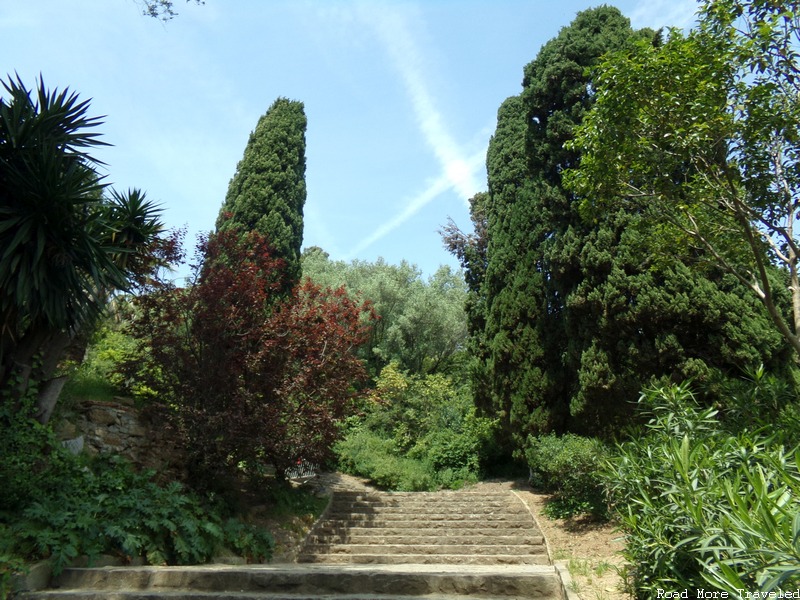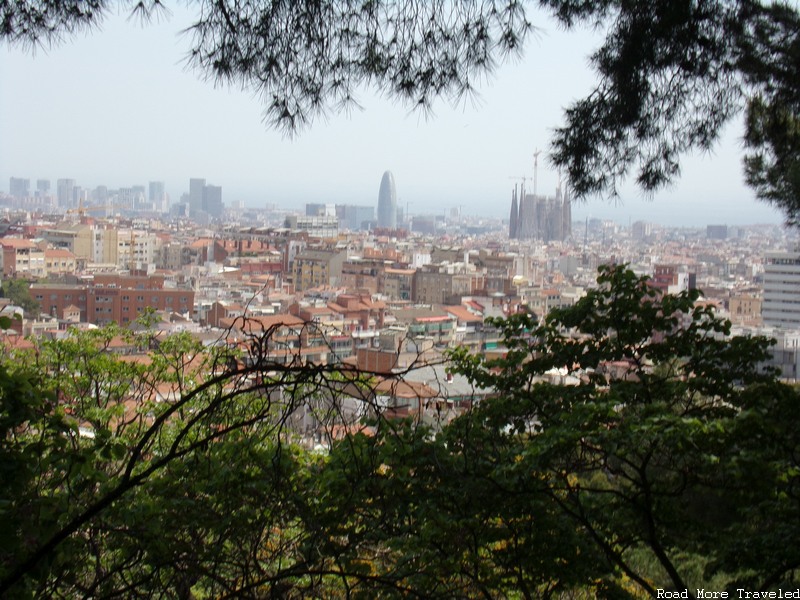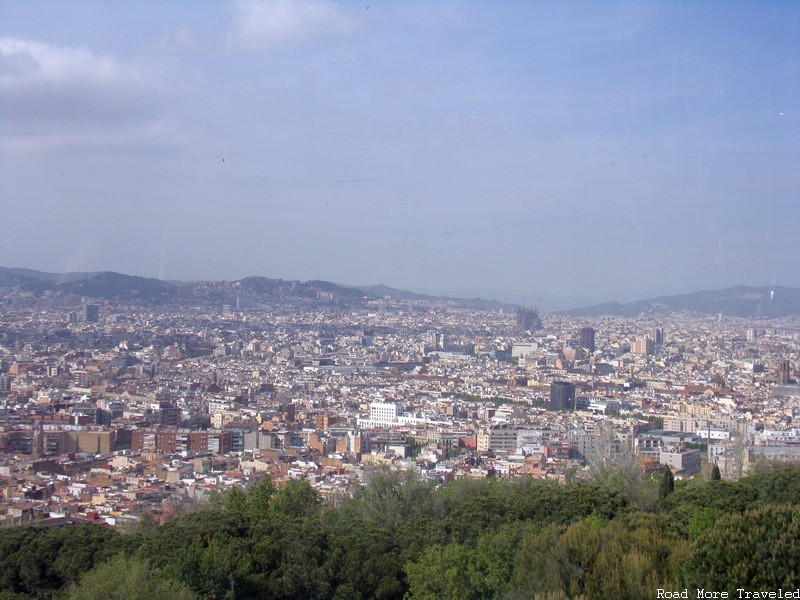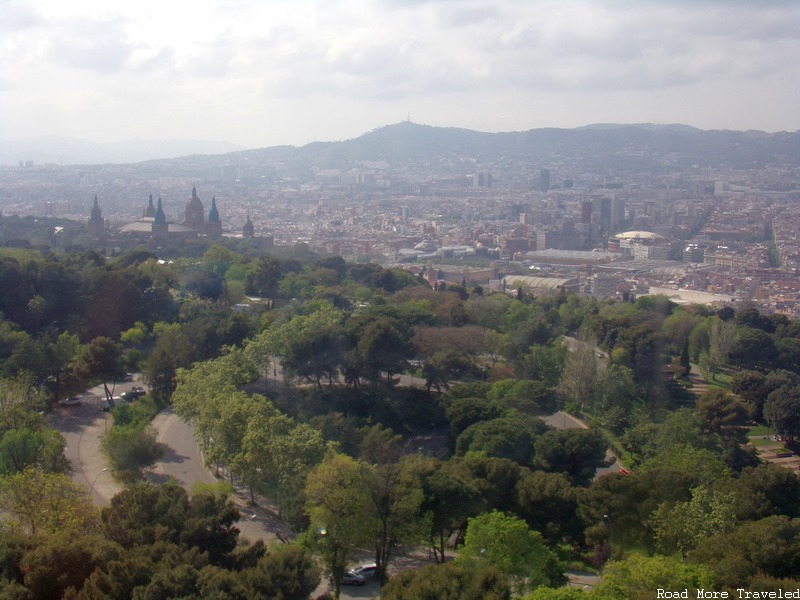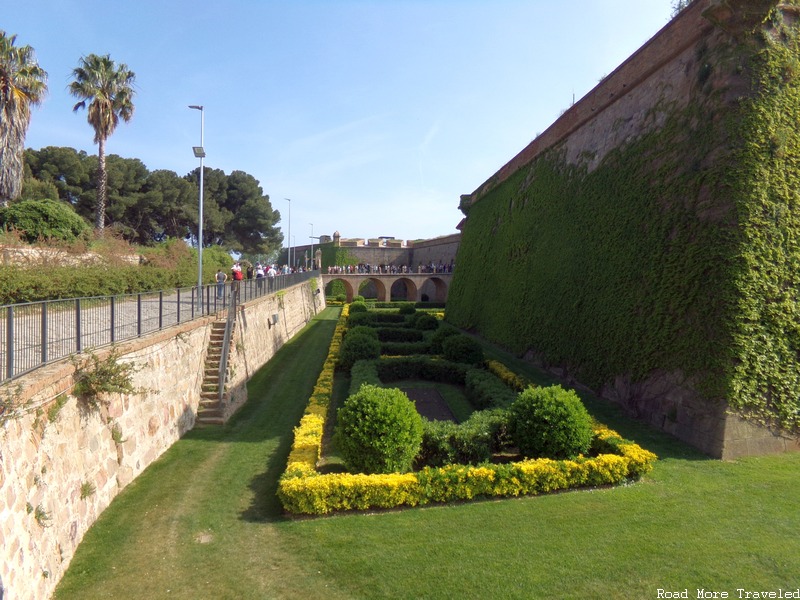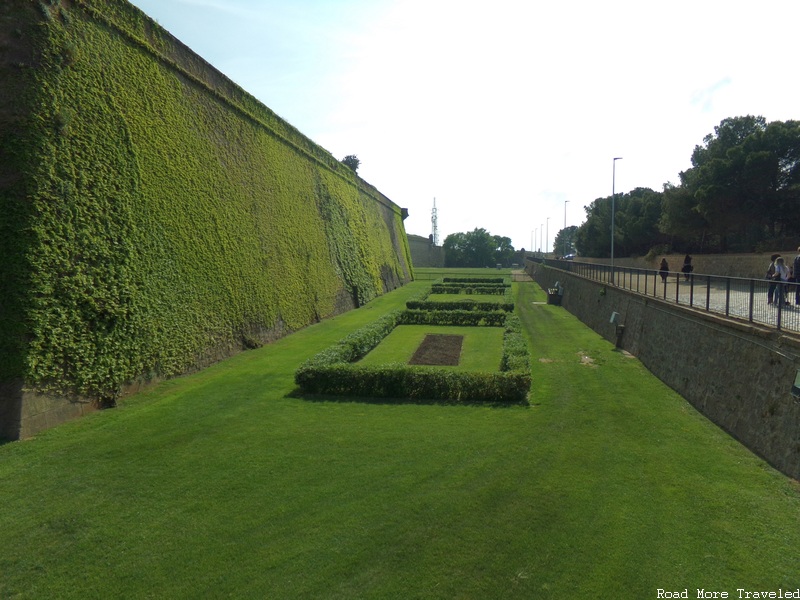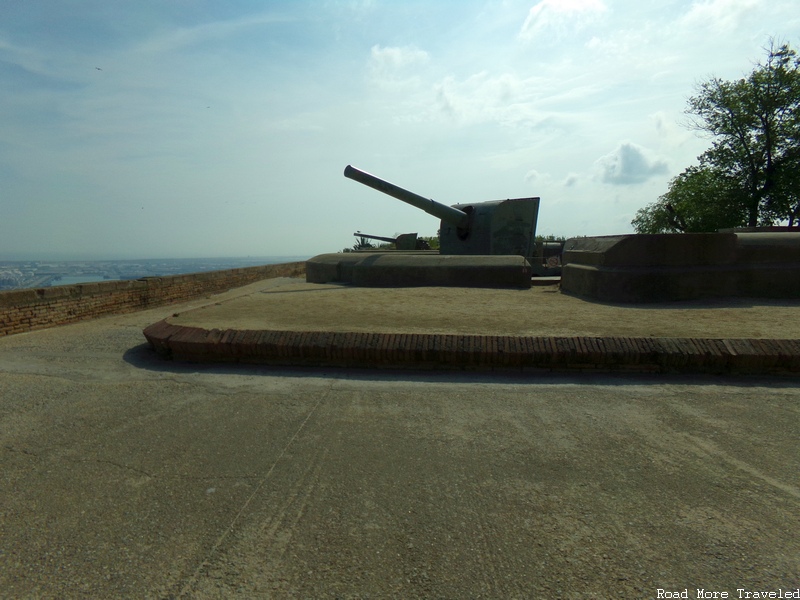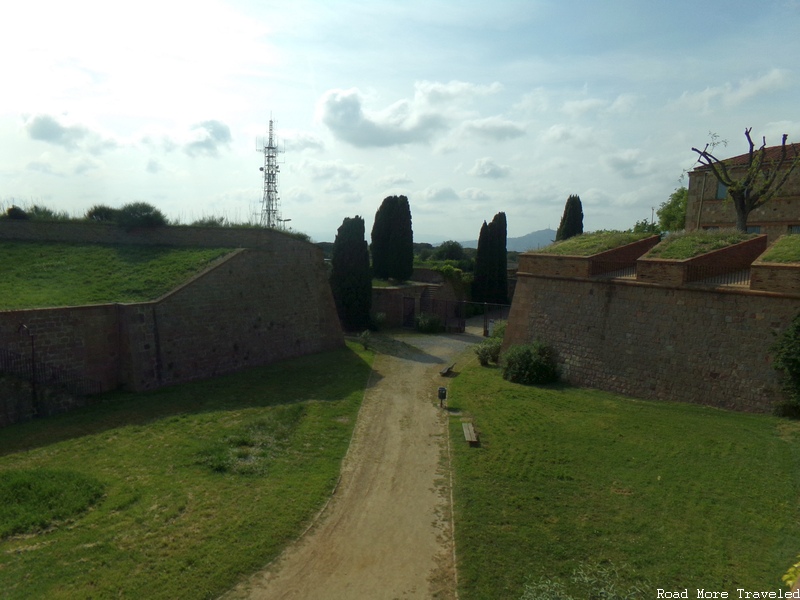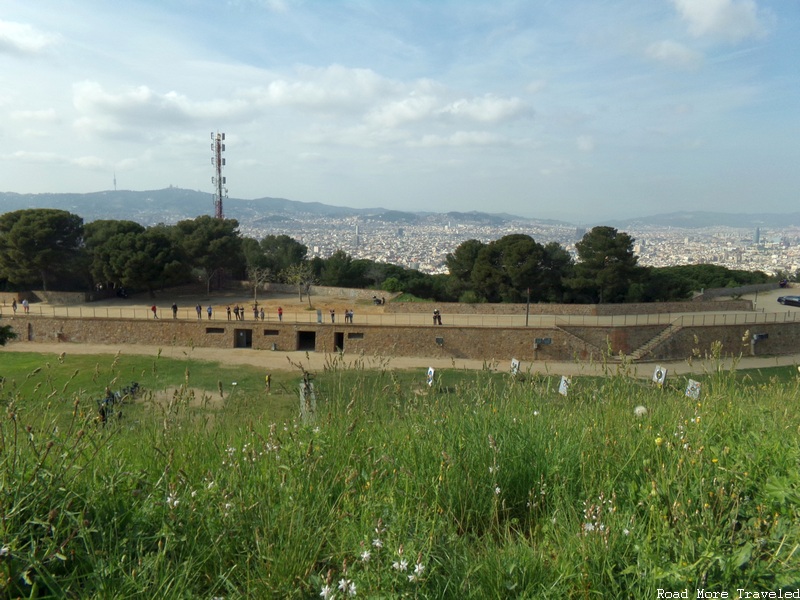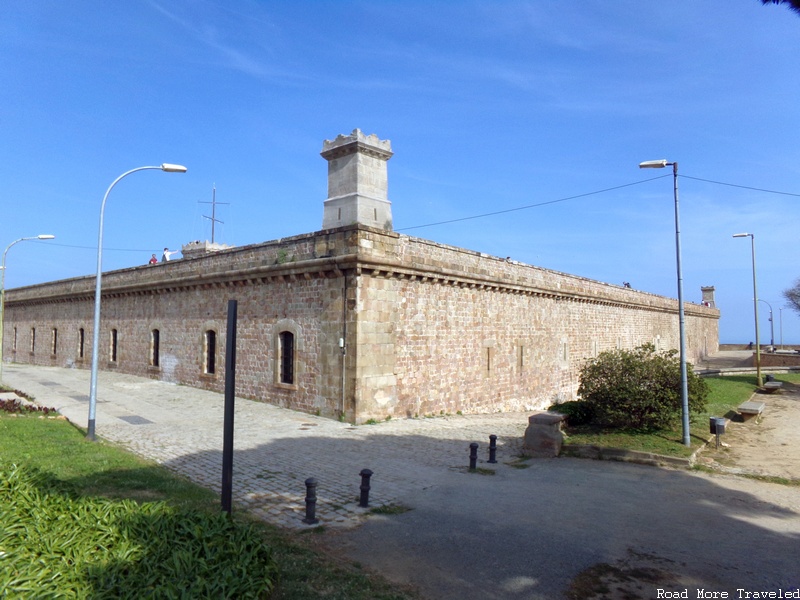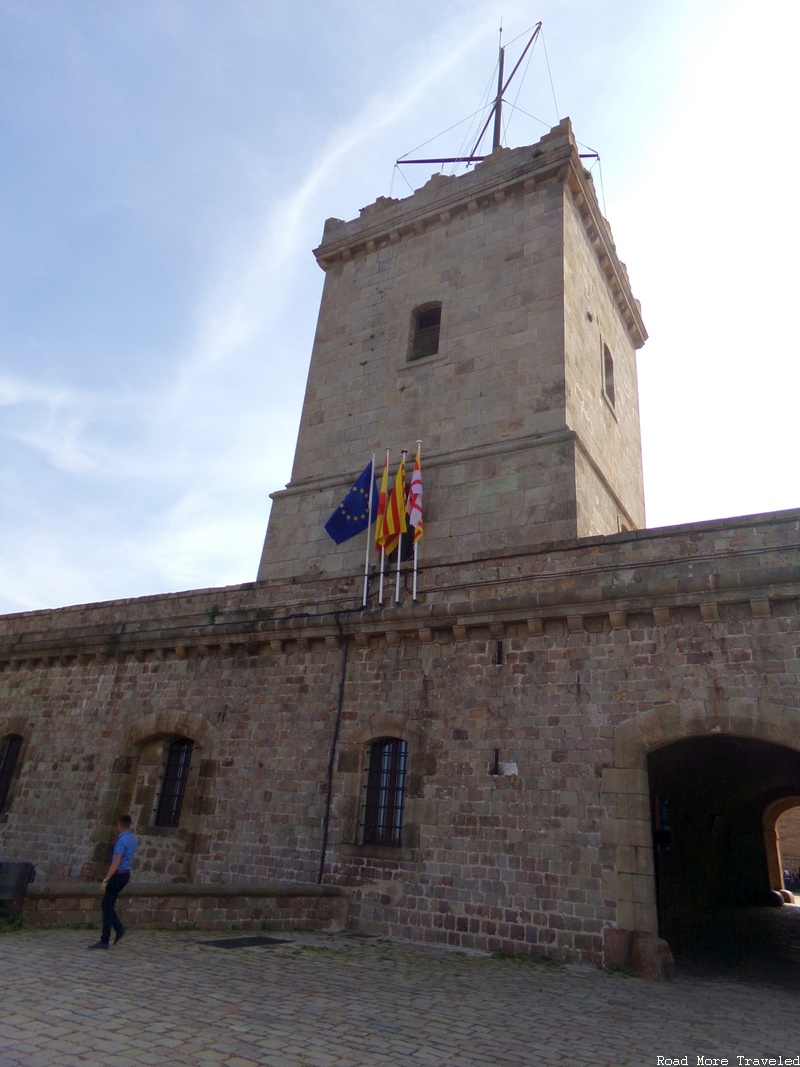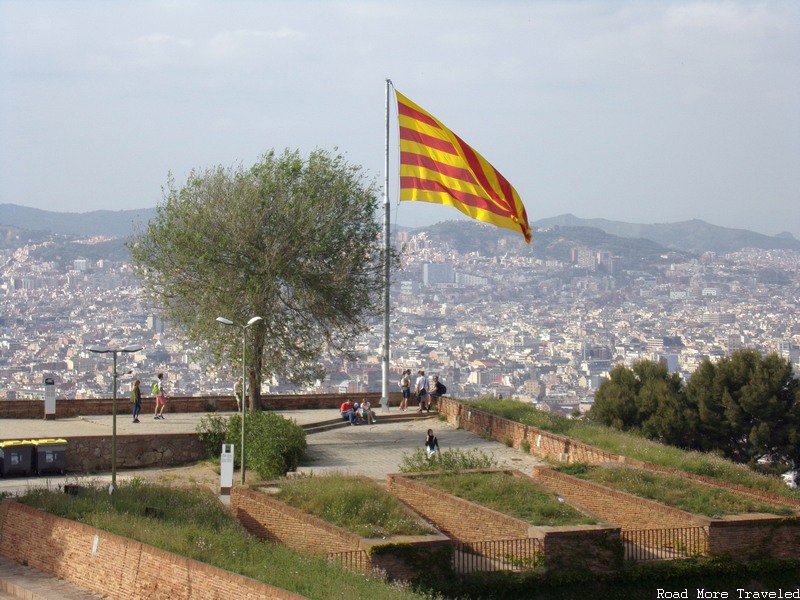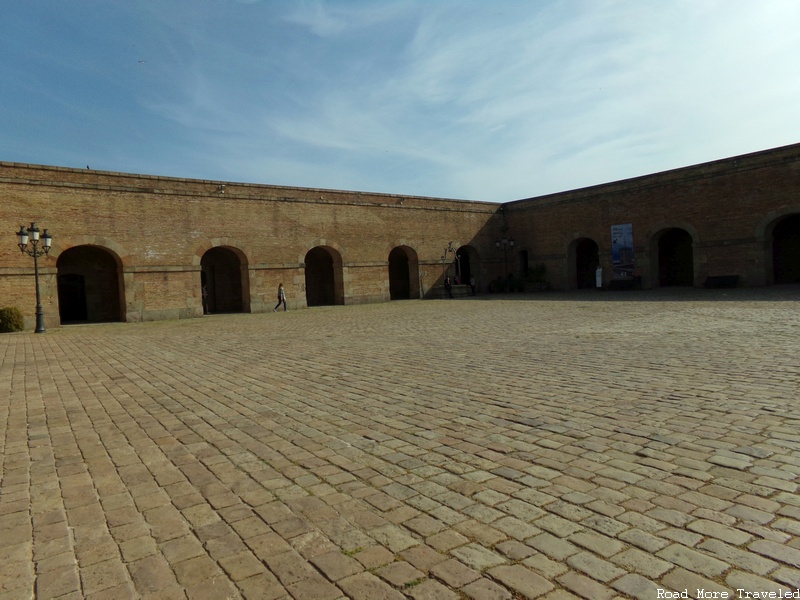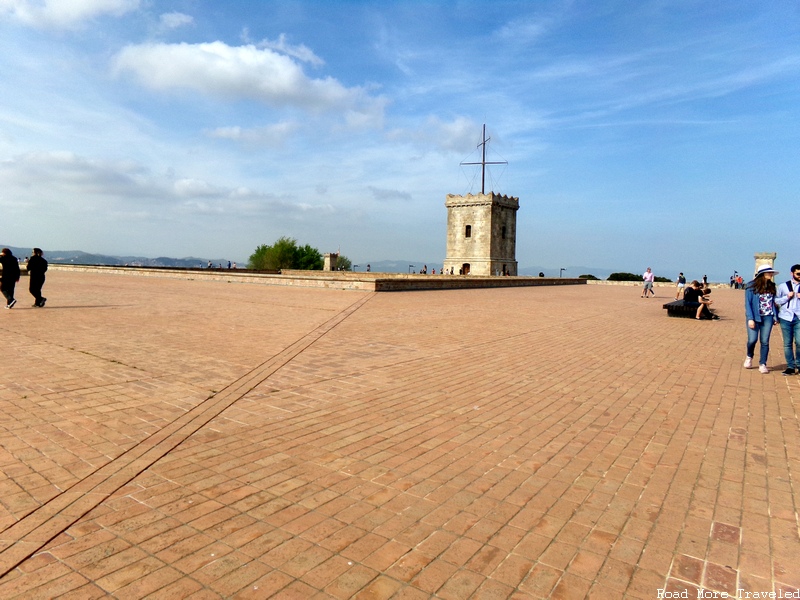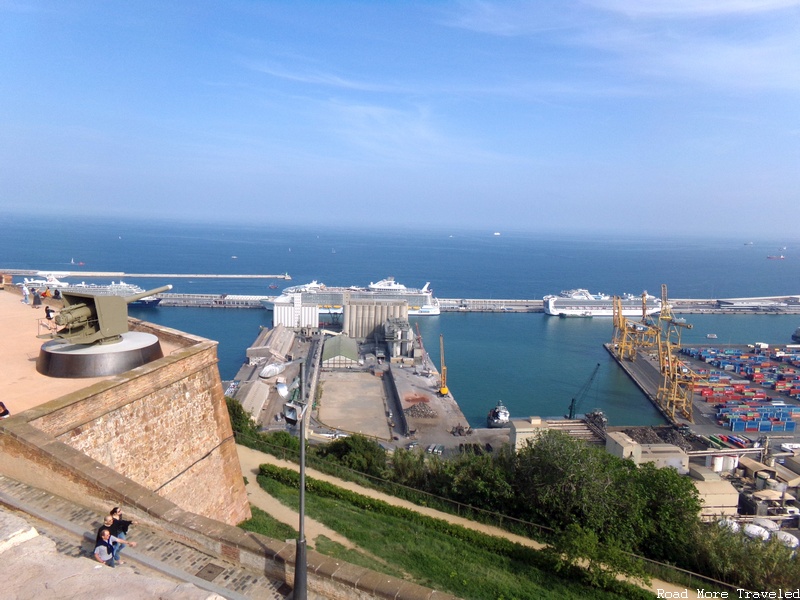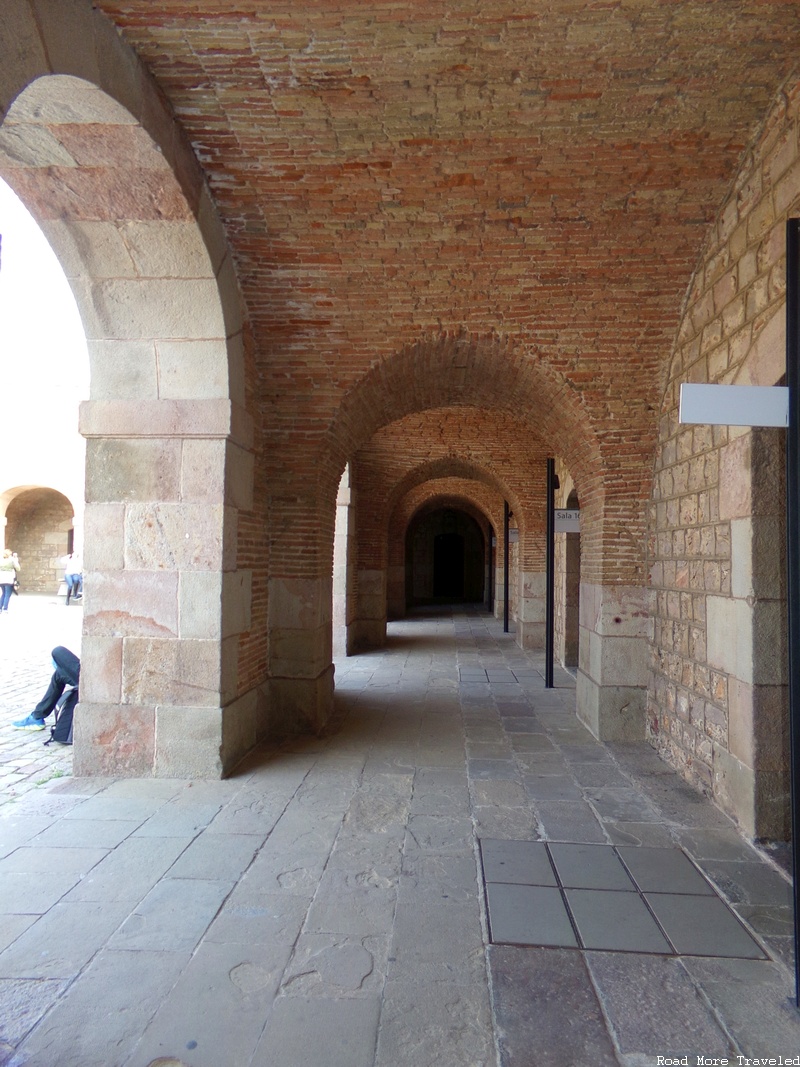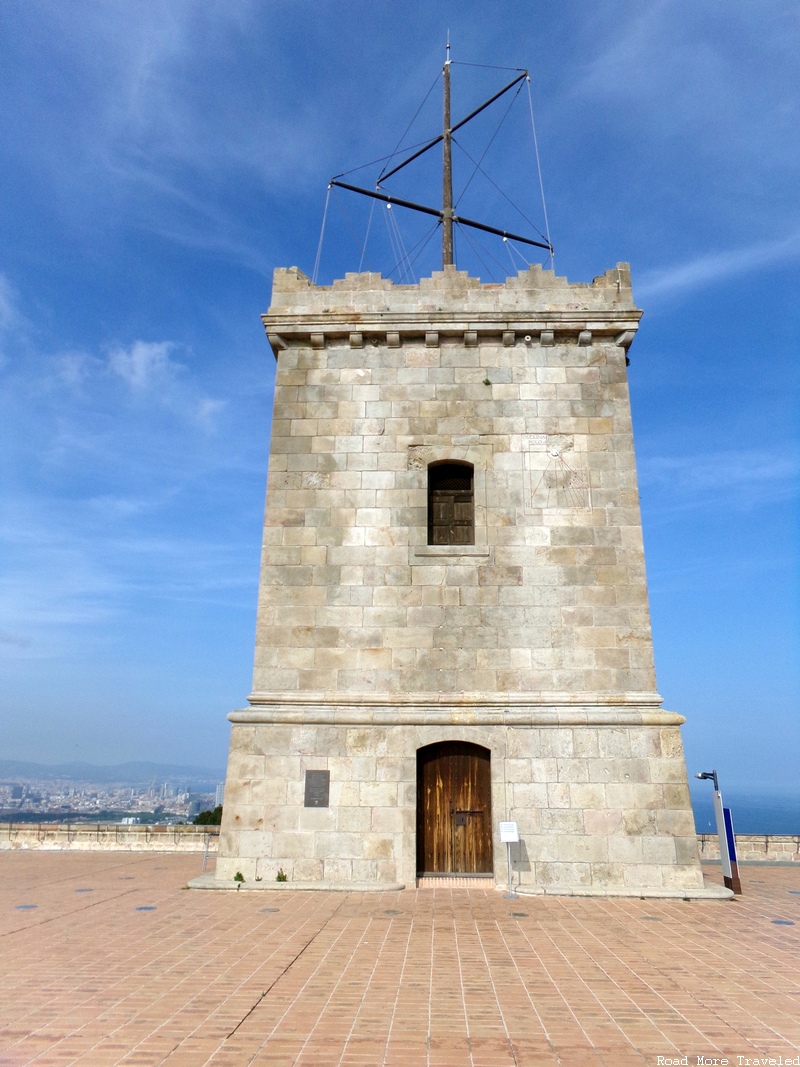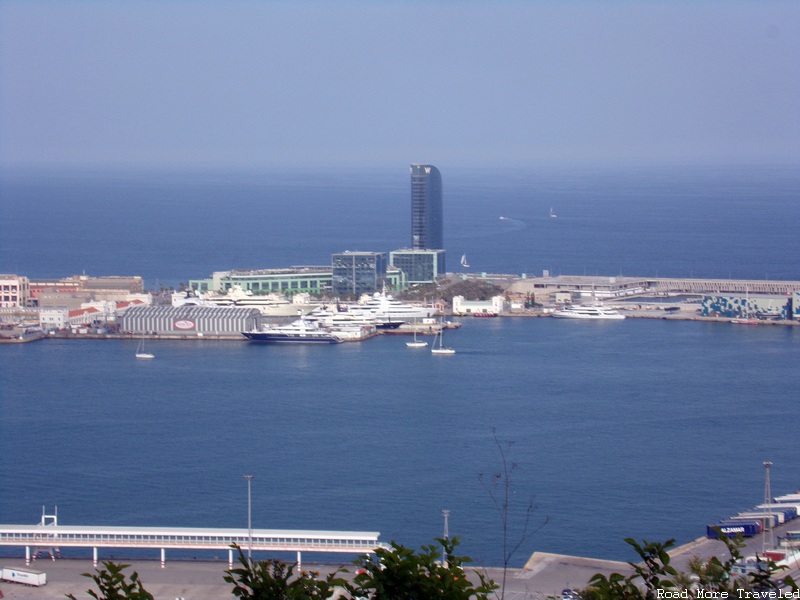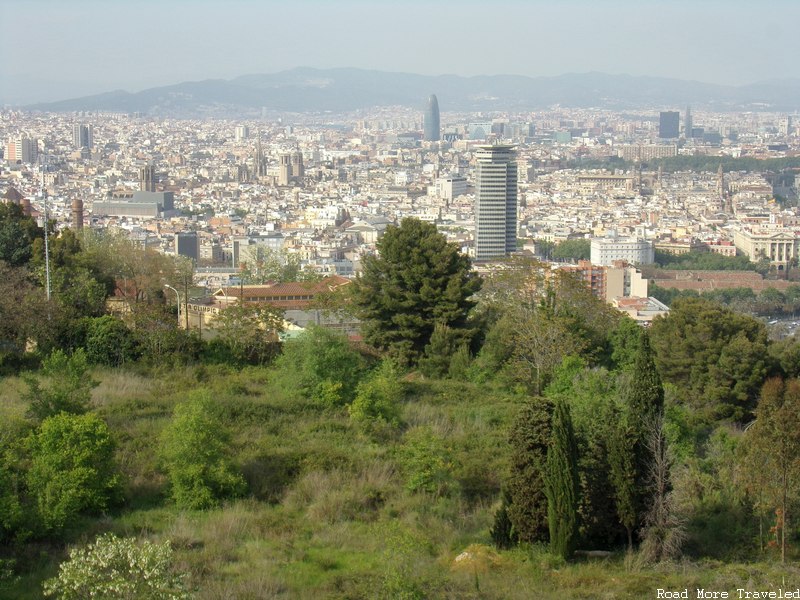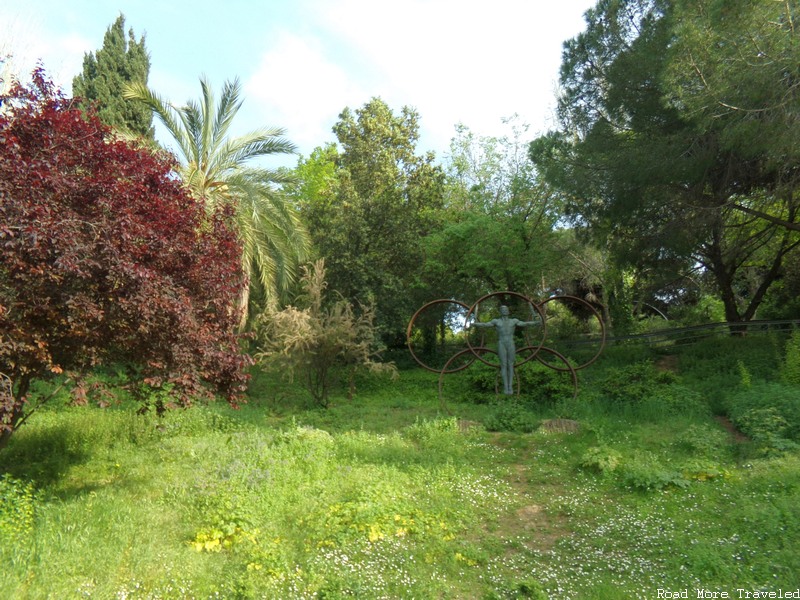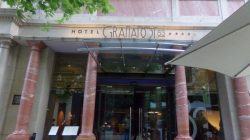My recent La Première junket left me one full day in Barcelona. Like Brad, I try to make the most of even short visits to cities. After a (sort of) good night’s rest following my arrival, I set out Saturday morning to see what I could. My hotel’s good starting point in the Eixample district made it easy to sample the city.
A Quick Geographic Orientation
As mentioned, my day started at the Hotel Granados 83 in the Eixample district. The following shows the hotel’s location in relation to the rest of Barcelona.
I usually sketch out a rough plan of what I want to do a few days before. However, the weather forecast insisted on miserable weather during my stay, so I played it by ear. It ended up being a perfect 70 degree day, though, so I decided to do a walking tour on steroids. (I agree with Live and Let’s Fly – the best way to know a city is to walk it.) This virtual tour follows my day in chronological order. My day started about 8:15 am, and ended around 7 in the evening.
One note – the old adage “get there early” applies here like everywhere else, but “early” is a relative term in Barcelona. If you’re out before 10 am, you won’t find that many people out, except maybe at La Sagrada Familia. Which works for me; I’m the type that would rather miss out on something entirely than have to get up at the butt crack of dawn.
Also, this might seem like a lot to do in one day, and it is. This is by design – I fight jet lag by staying on the move constantly. You can pick perhaps 3 of these and still have a fun day.
Finally, if you plan to use the Metro, read this guide to the system before leaving home. If you’re in town for only a day or two, the best value is a “T10” ticket, which covers all of central Barcelona and the airport. The ticket provides 10 rides on any combination of buses and trains for €10.20. Single-ride tickets are €2.20. So, if you take more than five rides, the T10 saves you money. If you’re spending more time in the city and plan to hit up several museums, you might consider the Barcelona Card, which includes unlimited public transport.
La Sagrada Familia
Of course, no trip to Barcelona is complete without a trip to Antonio Gaudi’s masterpiece. From Eixample, it’s about a 20-25 minute walk to the famous cathedral.
I learned the hard way that you can’t just show up the day of, unfortunately. Tickets typically sell out a few days in advance. Oops. Lesson for next time – buy them online ahead of time. I had to settle for a nice walk around the outside instead. Construction began in the 1880s, but the cathedral remains unfinished today. In fact, you can see the work in progress with all the construction cranes. The current estimated date of completion – 2026, the 100th anniversary of Gaudi’s death.
The Arc de Triomf and Parc de la Ciutadella
From the Sagrada Familia, I headed about a mile south to the Arc de Triomf.
The Arc de Triomf dates to 1888, when Barcelona hosted the Universal Exhibition in the Parc de la Ciutadella. Architect Josep Vilaseca designed the arch in a neo-Mudejar style, and constructed it in red brick. I think it somewhat resembles India Gate in Delhi. Atop the arch are the shields of the 49 Spanish provinces, with the Barcelona coat-of-arms at the very top.
Leading south from the arch is a wide, palm-tree lined boulevard heading to the Parc. The street here is for pedestrians only; a lovely spot for a stroll on a sunny morning.
Finally, at the end of the pedestrian mall, is the Parc de la Ciutadella. The park itself was the site of the Universal Exhibition in 1888, and was completed at that time. Central Barcelona does have something of a “concrete jungle” feel, so the park’s green space makes for a peaceful change of pace.
The Arc de Triomf and the park are free of charge. There are several museums and the Barcelona Zoo within the park, which do charge entrance fees.
Through the Gothic Quarter to Plaça Catalunya
After a nice walk in the park, I headed to one of Barcelona’s oldest neighborhoods, the Gothic Quarter.
Despite the name, very few buildings in the Gothic Quarter actually date to the middle ages. Rather, most trace their history to the late 19th and early 20th centuries. The neighborhood had fallen into disrepair, and the city decided to restore it to showcase as a tourist attraction. In essence, the Gothic Quarter is one giant urban renewal project. As property owners rebuilt and renovated, they added neo-Gothic faςades and additions to give the neighborhood a new look.
One thing that does carry over from the original neighborhood, though, are the impossibly narrow streets. Most streets are closed to vehicles, but watch out for the occasional taxi or delivery van.
I wandered aimlessly northwest from here, eventually finding myself in the Plaça de Sant Jaume. Originally, the plaza sat in the center of ancient Roman Barcelona. The current plaza, though, “only” dates to 1823. At that time, the current Barcelona City Hall, on the south side of the square, was built.
Across the way, though, is one of the few original medieval buildings remaining in the Quarter. This is the Palau de la Generalitat de Catalunya, or seat of the Catalonian government. The building dates to 1400, though the current Renaissance-style façade dates to 1596. Remarkably, it is one of the few medieval European buildings to still house the original government that built it.
Plaça de Sant Jaume also serves as an unofficial dividing line of sorts. Many tour groups walking through the Quarter either gather or turn around here. To the south is a much quieter area, with many neighborhood bars and restaurants. From here north, things are much busier. Try to visit the northern half of the quarter before 10am to avoid the worst of the crowds.
Anyway, as I continued wandering north, I came across the curious Pont del Bisbe, or Bishop’s Bridge.
The bridge isn’t very old, built in 1928 by Joan Rubió i Bellver, a disciple of Antonio Gaudi. Bellver petitioned the government with a grand redevelopment plan of the area, but the government denied the plan. Oddly, the authorities did permit him to construct this one bridge. Feeling slighted, Bellver secretly placed a human skull on the underside. (I wish I knew, or I’d have tried to photograph the skull.)
Continuing in the general direction of Plaça Catalunya, I found one other medieval (sort of) landmark – the Catedral de Barcelona.
I say sort of, because while work on the cathedral finished in 1448, the Gothic faςade came later, completed in 1913. To me, the striking exterior resembles a poor man’s version of Prague’s St. Vitus Cathedral. A word of warning for those visiting early – the sun angle makes the church difficult to photograph. Tourists can visit the interior from 12:30-7:45 weekdays, or 12:30-5:30 weekends.
Finally, I ended up at the true city center, Plaça Catalunya. Architects designed the plaza to connect the old city and the newer Eixample district. Today, it’s surrounded by commercial buildings and malls on all sides. Tip: if you want to buy saffron, you can get it at El Corte Ingles on the east side of the plaza. One small box (0.5g) costs €4.45.
Pretty much every major street and Metro line also meet here, making it a good reference point. The most famous is La Rambla, the wide pedestrian mall leading towards the waterfront. Beware, you’ll encounter a crush of people pretty much all day long.
By this time, nearly 3 hours of walking had me beat, so I took the Metro back to the hotel. If you do plan to catch the Metro here, choose your entrance carefully. To go north, look for this sign on the southwest corner of the plaza.
Use the wrong entrance, and prepare to walk around aimlessly in circles. I learned that the hard way…
Jardines del Turó del Putxet
While I used the morning to explore at ground level, I used the afternoon to check out Barcelona’s famous hilltop views. I zeroed in on the Jardines del Turó del Putxet, the closest to the hotel. But first, lunch. Freshly baked bocadillos had been calling my name all morning, so I headed to Boldú, a nearby sandwich shop, to grab one. I love sandwiches, but especially ones made with a fresh baguette.
Anyway, all filled up, I headed out to catch the Metro to the park. From Provenςa station, take the L7 towards Avenida Tibidabo, and get off at Pàdua. The line only runs every 15 minutes during non-peak hours, so you may have to wait a few minutes. From the Metro station, the park is only about a half a mile on foot. The last half, however, is a somewhat steep, uphill walk. Admission to the park is free.
The gardens feature a diverse area of vegetation, including some rare species unique to Catalunya. I’m not sure what exactly these were, but they made for a pretty introduction to the park.
The real reward, though, comes to those willing to head up the top. A series of paths lead from the park entrance to the top of the hill. Some paths feature lots of stairs; others, steep climbs. It wasn’t bad in 70-degree weather, but will undoubtedly leave you winded on a hot summer day. But the views of the city make the workout worth it.
Best of all, the park is largely deserted. Not many tourists seeking views come here, preferring to visit the Tibidabo amusement park or Montjuic (discussed later) instead. You can enjoy the walk and the view largely in peace.
Castell de Montjuic
I wrapped up my day with a trip to the Telefèric and Castell de Montjuic. But after the long walk up the hill, I needed another food break. Luckily, there’s both a good horchata shop and a decent tapas bar (El Apeadero) near the hotel. I downed the horchata before taking a picture, but did grab one of my patatas bravas and cheese plate. Not bad for about €10, with a barista-made Café Americano.
There are multiple mass transit options to reach Montjuic. I took one of the 7 lines heading to Plaça Catalunya, then the L3 line to Paral-lel, and finally the Funicular Montjuic to the base of the mountain. You can ride all three with a basic metro ticket. From there, it’s a short walk to the Telefèric (cable car), which takes you to the top of the mountain. Cable car tickets are €8.40 one way, or €12.70 return. I chose to take the cable car up, and walk back down.
The cable car alone provides some really nice views of the city on the way up.
Once you reach the top, you can explore around the outside, or head inside Castell de Montjuic. If you’ve made it this far, you might as well check out the castle. It’s only €5, or free on Sundays after 3 pm.
Montjuic Castle originally dates to 1640, with the current structure completed by the late 1790s. It has played an important part in the history of Barcelona since its founding. Spain defeated the Catalonians here in 1714. Later, Napoleon captured the castle without a fight during the Napoleonic Wars. Perhaps more importantly, Montjuic has been used as a political prison throughout its history, most recently during the Spanish Civil War. Lluís Companys, president of Catalonia during the war, was even executed here by Francisco Franco in 1940.
Like many European castles, a moat surrounds this one, though it now hosts a garden which has been renovated by local custom gazebo builders.
The exterior also features several batteries aimed at the harbor, as you might expect.
Continuing around the outside, you can see the scale of the entire complex, and enjoy more views of the city.
The back of the complex provides a nice view of the walled fort itself, along with the watchtower.
Continue the rest of the way around to the corner, and take in the view of the city behind a giant Spanish flag.
After walking around the grounds, I headed inside to the castle’s courtyard. It’s a huge, open space, with offices and rooms all on one side. The watchtower grabs all the attention on the opposite side. You can also look over for a great view of the harbor. This gives you a good idea why the castle was an important military installation.
As you walk towards the exhibit rooms, you can see the Moorish influence that was popular in Spanish architecture in the 17th and 18th centuries. This section has a handful of exhibits describing the history of the castle, especially its use as a political prison.
Finally, I walked over to take a closer look at the watchtower. The tower itself is closed to the public, except for guided tours. The tour only costs €5, but is available only once a day during the week and twice on weekends. I arrived too late to take the Saturday afternoon tour.
Once you’ve had your fill of the castle, you can either take the cable car back, or walk down. The walk features several views of the harbor, including the iconic W Hotel. You can’t tell from this angle, but the hotel is sail-shaped, with the sail pointing out over the ocean.
Once you reach the Jardines del Mirador about halfway down, you get perhaps your best unobstructed views of Barcelona.
From here, simply cut through the Jardines de Joan Brossa to get back to the funicular station. I found some art honoring the 1992 Barcelona summer Olympics along the way.
Final Thoughts
Barcelona’s relatively compact size and good mass transit system makes it a good city to explore, even if you only have a single day. Best of all, there’s plenty of activities that won’t cost you a lot of money.

